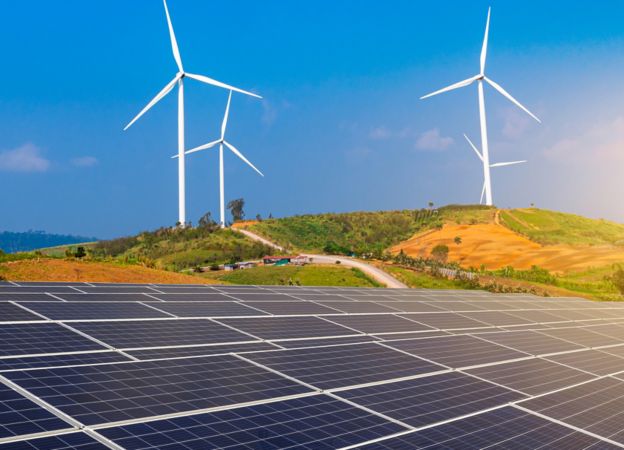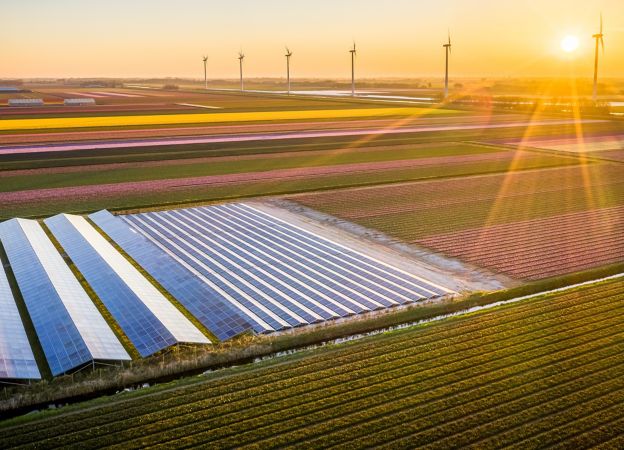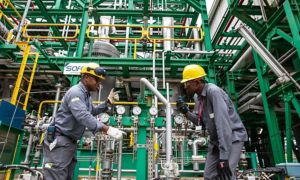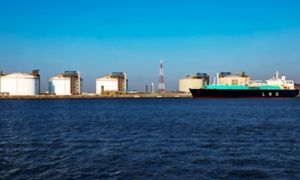~208 k
bcm
(bilions cubic meters) global natural gas reserves

Or , our new artificial intelligence tool.
A versatile source that complements the ever-changing energy world and one that can play a supporting role in the decarbonisation path.

The commercial use of gas began in the 19th century, initially for public lighting. The advent of electricity prompted the search for new applications for natural gas and new solutions for infrastructure and transport. Gas quickly became an important energy source which was used for electricity generation, for residential use (mainly heating), for industrial processes and more recently as an alternative fuel for vehicles.
Gas production in Italy began in the 1940s with the discovery of the Caviaga field in Lombardy by Agip, followed by the Cortemaggiore and Ripalta fields. The discovery of gas reserves in the Po Valley was one of the reasons that led to the foundation of Eni in 1953. As a result, Italy became the world's third largest gas producer after the United States and Canada. The rapid development of the sector underpinned the country's economic expansion. In the decades that followed, Eni's role went beyond the development of domestic resources, contributing to the creation of import infrastructure and assuming a new position in the global energy landscape. Italy’s economic diversification is supported by increasingly available energy, including that coming from natural gas, facilitating the country’s emergence as one of the world’s leading manufacturing economies.
Since its early days, Eni has established partnerships with many producing countries around the world. These collaborations were complemented by the construction of a robust network of gas pipelines, thus ensuring the diversification of supply sources and the security of Italy's gas supply. Expansion led to the construction of the first Transmed line in 1983, which secured additional gas volumes from Algeria to support the methanisation process in southern Italy and facilitate the gradual replacement of oil in the energy mix. In 2004, Eni and Libya's National Oil Corporation (NOC) built the GreenStream gas pipeline, connecting Libya to Italy along a 520-kilometre route, which continues to be a primary source of natural gas for the country.
The development of the gas market increasingly emphasizes the need for greater flexibility and broad diversification of sources, opening up new challenges and seizing the opportunities offered by liquefied natural gas (LNG). In the current global energy scenario, LNG's ease of transport over long distances by ship is making it a crucial factor in its contribution to energy security. Eni is active in the sector both as a producer and as an exporter. We own gas liquefaction plants in several countries, which facilitates a rapid response to global demand.
Here are some highlights from Eni’s World Energy Review 2025 (July edition). The data refers to 2024.
Learn more(bilions cubic meters) global natural gas reserves
natural gas reserves in Europe
global natural gas production
global natural gas consumption
natural gas production in Europe
natural gas consumption in Europe
global LNG imports on total global gas imports
Natural gas has the smallest carbon footprint among fossil fuels, with methane combustion producing about 50% less emissions than coal. The flexibility and reduced lead time of gas-fired power plants also allows for an efficient integration with renewable energy sources, ensuring continuity of electricity production when the sun and wind are not available. Finally, gas emissions can be further reduced through innovative technologies and processes such as Carbon, Capture Utilization and Storage (CCUS). Currently, gas accounts for over 23% of the global energy mix, after oil (around 30%) and coal (around 27%), while renewables account for around 12%. While the role of renewables is expected to grow gradually in the coming years, gas remains crucial both to integrate intermittent sources and to support the energy transition by replacing other fossil sources with a larger carbon footprint.
Here is some data for a better understanding of the role of natural gas in Italy (MASE, 2024 figures).
gas demand in Italy
gas production in Italy
import via pipelines (~75% of total)
import of LNG (~25% of total import)
Thanks to its flexibility and accessibility, gas is a significant aid in the decarbonization process.

If you want to change topic, clear the chat and make a new query to receive more relevant results.
This will delete the question history.
If you want to change topic, clear the chat and make a new query to receive more relevant results. This will delete the question history.
Here you can find the full list of your queries.
The answers are generated by artificial intelligence, therefore they may contain inaccuracies. Please read the terms and conditions of use.

EnergIA is an innovative tool based on artificial intelligence capabilities, which can help you navigate the contents of eni.com, quickly finding answers to your questions. EnergIA can also perform a search on a specific topic, providing the most up-to-date data available, or it can invite you to delve deeper into a topic of your interest by suggesting links and specific readings. Start now!
EnergIA is an innovative tool based on artificial intelligence capabilities, which can help you navigate the contents of eni.com, quickly finding answers to your questions. Start now!
EnergIA (ener'dʒia) is a system based on Generative Artificial Intelligence.
Thanks to this technology, we can respond to your requests by querying the most relevant content and documents available on eni.com. (Note: financial documents from the last 12 months and press releases from the last 2 years are considered.)
Through EnergIA, you can delve into topics of interest and have a real-time window into the world of Eni.
If you wish to search for a specific document, press release or news, use the traditional search engine via the magnifying glass icon.
Like all systems that leverage Generative Artificial Intelligence, EnergIA may generate inaccurate or outdated responses. Always consult the sources that EnergIA proposes as the origin of the generated information.
If the system fails to find an exact match for the requested content, it still tends to provide a response.
If you find any inaccuracies in the provided response, please send us your feedback at the bottom of the page: it will be very helpful for us to improve.
Remember that the content generated by the system does not represent Eni’s official position. We therefore invite stakeholders to refer to their designated contacts for official statements: Press Office for journalists, Investor Relations for analysts and investors, Company Secretariat for shareholders etc..
EnergIA can understand questions posed in almost all languages, but we prefer to provide you with a response in English or Italian, the two languages available on eni.com. If you ask a question in Italian, the content on the site in Italian will be consulted. If you ask it in English or any other language, the content in English will be consulted. (Note: the language Eni uses for financial documents/content is predominantly English.)
If questions are formulated that violate the set security criteria, the system will not proceed with processing the response. Please remember not to send personal data.
By using this service, the users acknowledge that they have read and accepted the terms and conditions of use.
Search
EnergIA (ener'dʒia) is a system based on Generative Artificial Intelligence.
Thanks to this technology, we can respond to your requests by querying the most relevant content and documents available on eni.com. (Note: financial documents from the last 12 months and press releases from the last 2 years are considered.)
Through EnergIA, you can delve into topics of interest and have a real-time window into the world of Eni.
If you wish to search for a specific document, press release or news, use the traditional search engine via the magnifying glass icon.
Like all systems that leverage Generative Artificial Intelligence, EnergIA may generate inaccurate or outdated responses. Always consult the sources that EnergIA proposes as the origin of the generated information.
If the system fails to find an exact match for the requested content, it still tends to provide a response.
If you find any inaccuracies in the provided response, please send us your feedback at the bottom of the page: it will be very helpful for us to improve.
Remember that the content generated by the system does not represent Eni’s official position. We therefore invite stakeholders to refer to their designated contacts for official statements: Press Office for journalists, Investor Relations for analysts and investors, Company Secretariat for shareholders etc..
EnergIA can understand questions posed in almost all languages, but we prefer to provide you with a response in English or Italian, the two languages available on eni.com. If you ask a question in Italian, the content on the site in Italian will be consulted. If you ask it in English or any other language, the content in English will be consulted. (Note: the language Eni uses for financial documents/content is predominantly English.)
If questions are formulated that violate the set security criteria, the system will not proceed with processing the response. Please remember not to send personal data.
By using this service, the users acknowledge that they have read and accepted the terms and conditions of use.
A new window into Eni’s world, at your disposal. EnergIA is an innovative tool based on artificial intelligence capabilities, which can help you navigate the contents of eni.com, quickly finding answers to your questions.





